TRANSLATION NOTES: Please read some comments at the end of this post.
I’ve taken out of the box these toys, in a week we will do training to see how it works. For now, I’ve barely seen the videos and some of its attributes.
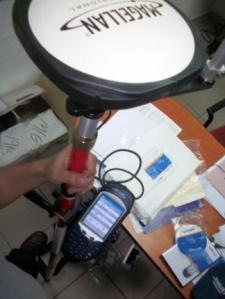 Promark 3 predecessors.
Promark 3 predecessors.
In this same line, there previously were, and now are these last equipments:
- The Mobile Mapper Pro, a nice toy who was near U.S. $ 1.500, and which with postprocess achieved sub-meter accuracy. It could be base and rover. Today is discontinued, it was annoying that the card got unset when boot, perhaps by a virus, perhaps by mistake after the company employees’ strike.
- The Mobile Mapper CX, this is a Pro’s enhanced version, with an antenna can be used as a geodesic GPS. It had a relative named CE, which ran on Windows CE, and as I have heard, this CX doesn’t present the headaches that created.
- The Mobile Mapper 6, this is a new line, I talked about it several times. More or less equivalent to Trimble Juno, but surpasses it in precision. It can not be used as a base only as a rover and in real-time is a fucking browser with precision on 3 to 5 meters.
What’s new in the PM3
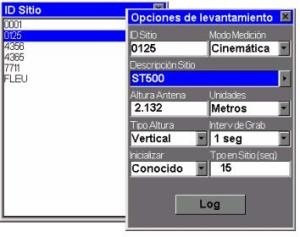 This brings similar functionality to Pro and CX, unlike 6, which brings the Mobile Mapping, camera, compass and more strikes. For those who tried the Pro it is very simple because the mode of operation is equal so many steps in the menu are simplified, which added to the keyboard and the touch screen makes it more productive. It supports reception and RTK re-establish, I’m not sure if it supports other applications such as ArcPad, as it can be done with MM6. It’s clear that software capabilities that come (Fast Survey) do not compare with the Mobile Mapping in terms of configuration, points viewing and other headaches from that equipment.
This brings similar functionality to Pro and CX, unlike 6, which brings the Mobile Mapping, camera, compass and more strikes. For those who tried the Pro it is very simple because the mode of operation is equal so many steps in the menu are simplified, which added to the keyboard and the touch screen makes it more productive. It supports reception and RTK re-establish, I’m not sure if it supports other applications such as ArcPad, as it can be done with MM6. It’s clear that software capabilities that come (Fast Survey) do not compare with the Mobile Mapping in terms of configuration, points viewing and other headaches from that equipment.
As the Pro, it can be base or rover; it’s purchased in pairs and comes in a handy canvas bag. Each includes an antenna, in real-time gets sub-meter precision (which was done with the pro with postprocessing). Leaving one as a base can provide centimeter precision; also this base data also would make MM6 reach the sub-meter as shown in the previous exercise.
Among the accessories it is an adapter to put on a tripod, another to bear on a stick and a belt to secure in the hand, a tape measure to take the antenna’s height, an adapter for different forms of USB / Serial connectivity. Among other things, an antenna cable, adapters for various power, SD card and individual waterproof bag.
The battery is made of lithium, with many more duration hours, leading to their ancestors who used AA; in the purchase of the pair comes a bar that is useful to put it under similar conditions of the “stop and go” work. It brings Mobile Mapper Office version 3.4 which is a software to make postrprocessing that already supports raster data, interaction with data from MapInfo, shp, dxf, and csv; and also another desktop application known as GNSS solutions, which includes survey planning capabilities. This last application has a very practical interface with drag and drop options reports and isometric deployment.
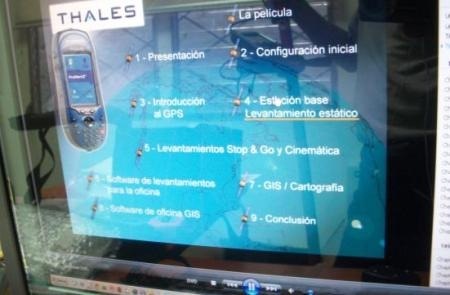
The best in accessories, DVD videos are in Spanish, just watching it you can save a lot of time in reading and understand practically how it works; although the manual is very helpful too. The video is ideal for training, among it a section that explains how to operate the satellite constellations and issues that affect the reception. It also includes the following topics:
- Equipment’s presentation
- Initial Setup
- Introduction to GPS operation
- Creating a Static Survey
- “Stop and go” survey and kinematics
- Software for field survey
- Use of Mobile Mapper Office and other office software
- Capture and GIS data management
In price, it depends on the local supplier, so I checked in my environment, the Mobile Mapper Pro walked by U.S. $ 1.500, the MM6 walks in less than the 1.200 and ProMark3 near $ 6.000 the pair. Not bad if you consider that you can achieve centimeter precision, other brands do not offer such equipment for this price.
If I had to compare it with other equipment; it could be said it’s almost like the Trimble GeoXH, although there are not exactly equivalent.
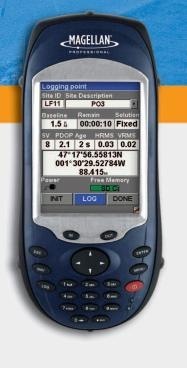 What does it follow
What does it follow
We will do a course this weekend with the total station’s guys and some friends interested in learning for free. We are interested in testing some aspects such as:
- What precisions are under similar conditions with the equipment available in the municipalities: MMPRO and MM6, compared with the RTK of the two ProMark3.
- What precisions can be accessed in real time and how functional would it be to walk under similar conditions with the Garmins Legend on properties larger than 3 hectares.
- What loss of precision is presented at different distances: 100 meters, one, three and 6 kilometers.
At the same time, now or never (*) we’ll prove some distance meters that in my opinion could eventually replace the Suunto compasses if it’s triangulared sufficiently in urban areas. Based on the evidence we will decide how to optimize the effort in the rural survey that will take us from June to September.
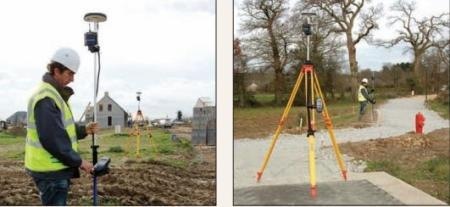
We’ll see how it goes.
TRANSLATION NOTES:
(*) It’s now or never. In Spanish this idiom is translated as ‘ahora o nunca’, ‘de una vez por todas
 Autocad Software, Bentley Microstation, Gis Google Earth, Gis System Geomate Provides Services For Complete Gis Software And Solutions, Autocad Software, Autocad Courses, Bentley Microstation, Microstation Software, Gis Google Earth, Open Source Gis And More.
Autocad Software, Bentley Microstation, Gis Google Earth, Gis System Geomate Provides Services For Complete Gis Software And Solutions, Autocad Software, Autocad Courses, Bentley Microstation, Microstation Software, Gis Google Earth, Open Source Gis And More.